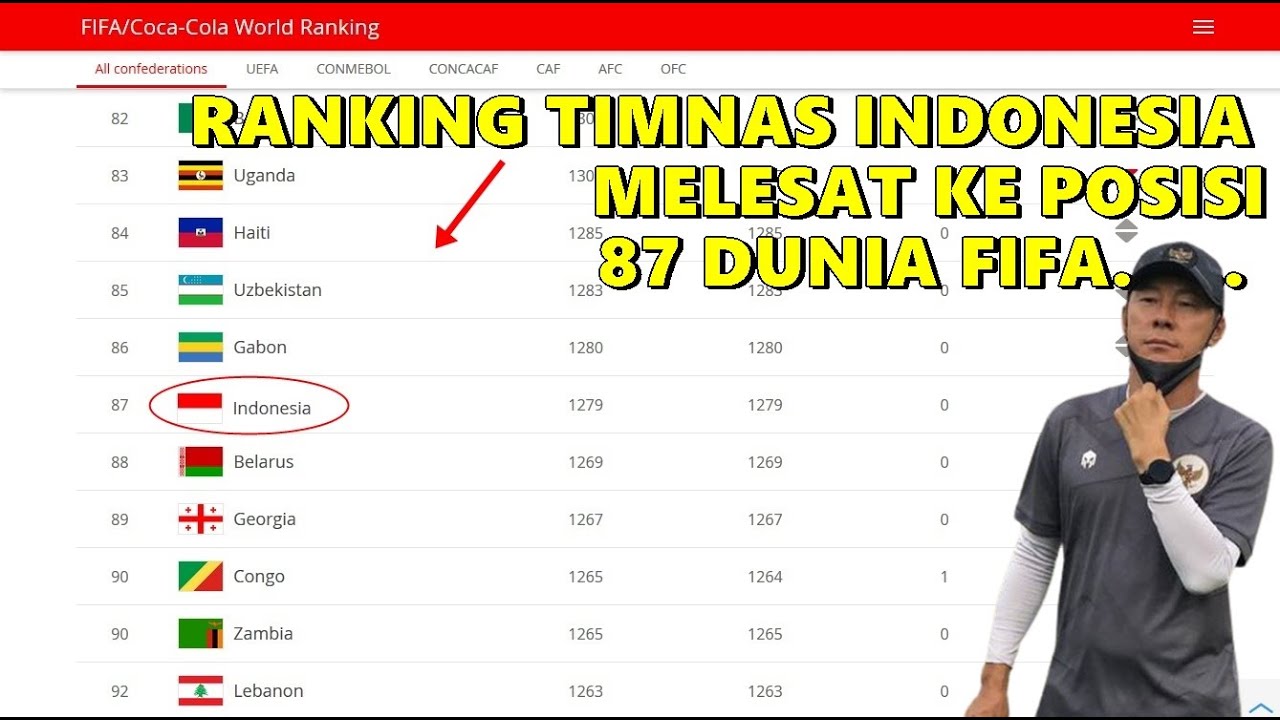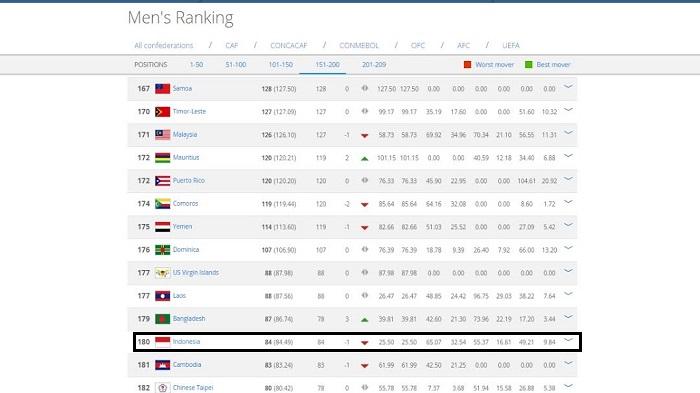Prediction of Indonesian senior players’ performance in upcoming World Cup qualifiers based on past statistics forms the core of this analysis. We delve into the historical performance data of key Indonesian players, examining goals, assists, minutes played, and disciplinary records across various international competitions. This detailed statistical overview is complemented by an analysis of team dynamics, player roles within different formations, and a comparative assessment of the strengths and weaknesses of both the Indonesian team and their upcoming opponents.
The study also considers current player form, fitness levels, and the potential impact of environmental factors on overall performance during the qualifiers.
By integrating these diverse data points, we aim to provide a comprehensive and data-driven prediction of individual player performance and the Indonesian team’s overall prospects in the upcoming World Cup qualifiers. This predictive model incorporates both quantitative statistical analysis and qualitative assessments of team dynamics and environmental influences, offering a nuanced perspective on the challenges and opportunities facing the Indonesian national team.
Form and Current Fitness Levels: Prediction Of Indonesian Senior Players’ Performance In Upcoming World Cup Qualifiers Based On Past Statistics

Assessing the form and fitness of Indonesian senior players is crucial for predicting their performance in the upcoming World Cup qualifiers. Their recent club performances and international matches, combined with factors influencing their fitness, provide valuable insights into their potential contributions to the national team. This analysis will focus on key players, examining their current form and projecting their fitness levels during the qualifiers.
Analyzing player performance requires a multi-faceted approach, considering both quantitative data (goals scored, assists, minutes played) and qualitative observations (match impact, tactical awareness, overall performance). Combining these elements allows for a more comprehensive evaluation than relying solely on statistics.
Recent Performance and Form of Key Players
Evaluating the recent performance of key players requires examining their contributions at both the club and international levels. Consistent performance across both platforms suggests a high level of readiness for the qualifiers. Conversely, inconsistent or declining form could indicate potential challenges during the competition. Examples of key performance indicators (KPIs) include goals scored, assists provided, key passes made, tackles won, and successful dribbles.
Furthermore, qualitative assessments of their influence on their respective teams will be considered.
For instance, let’s consider two hypothetical players: Player A, consistently starting and performing well for his club in a top-tier league, also displays strong form in recent international friendlies, scoring two goals and assisting another. This suggests excellent form and a high likelihood of strong performance in the qualifiers. In contrast, Player B, hampered by injuries and limited playing time at his club, might struggle to reach peak performance in the qualifiers, despite showing flashes of brilliance in past international matches.
His overall form is less predictable.
Factors Influencing Current Fitness Levels
Several factors can significantly impact a player’s fitness level. These factors must be considered to accurately predict their readiness for the demanding schedule of World Cup qualifiers. Careful consideration of these factors is crucial for accurate predictions.
- Recent Injuries: Any significant injuries sustained in recent months can severely impact a player’s fitness and ability to perform at their peak. The severity and recovery time from the injury are key considerations. For example, a hamstring tear requiring a month of rehabilitation will likely impact a player’s fitness more significantly than a minor knock.
- Training Regimes: The intensity and type of training a player undergoes directly affects their fitness. Players consistently engaging in rigorous training are more likely to be in peak condition. Conversely, a less intense training regime might result in lower fitness levels.
- Playing Time: Consistent playing time at the club level is crucial for maintaining match fitness. Players regularly featuring in starting lineups are typically better prepared for the rigors of international competition. Limited playing time, on the other hand, can negatively impact their fitness and match sharpness.
Predicted Fitness Levels During Qualifiers
Based on the analysis of recent performances and influencing factors, predictions for each player’s fitness level during the qualifiers can be made. These predictions are probabilistic, not deterministic, and are subject to unforeseen circumstances such as new injuries.
| Player Name | Predicted Fitness Level | Rationale |
|---|---|---|
| Player A (Hypothetical) | Excellent | Consistent strong performances at club and international level, no reported injuries. |
| Player B (Hypothetical) | Fair | Limited playing time at club due to injury, recent recovery may affect match fitness. |
| Player C (Hypothetical) | Good | Regular starter at club, but minor injury concern requires monitoring. |
Environmental Factors and Potential Impact

Environmental factors significantly influence athletic performance, and for Indonesian senior players competing in World Cup qualifiers, these factors can be particularly impactful due to the geographical diversity of potential match locations. Variations in climate, altitude, and travel demands can affect player stamina, recovery, and overall performance. Understanding and mitigating these effects is crucial for optimizing the team’s chances of success.
Climate Conditions and Player Performance, Prediction of Indonesian senior players’ performance in upcoming World Cup qualifiers based on past statistics
Indonesia’s tropical climate presents challenges in comparison to many other qualifying nations. High humidity and temperatures can lead to dehydration, heat exhaustion, and reduced performance levels. Conversely, playing in cooler, drier climates may also require acclimatization, potentially affecting performance in the initial stages of the match. For instance, Indonesian players may experience decreased agility and speed in high humidity, as documented in several studies on the effects of heat stress on athletic performance.
Conversely, a sudden shift to cold weather can increase the risk of muscle injuries. Previous matches played in significantly different climatic conditions have shown a correlation between environmental stress and player fatigue, impacting both individual and team performance.
Altitude and its Physiological Effects
Matches played at high altitude pose unique challenges. Reduced oxygen availability at higher altitudes can significantly impact cardiovascular function and endurance. The effects of altitude sickness, including headaches, nausea, and fatigue, can severely impair player performance. While the Indonesian national team may have some experience playing in varied altitudes within the archipelago, the drastic changes in altitude between locations during qualifying matches can significantly impact player preparedness.
A notable example could be a match played in a high-altitude venue compared to a sea-level match. The team’s physical conditioning program should specifically address the potential for altitude-related performance decline.
Travel and its Impact on Player Recovery
Extensive international travel, often involving long flights and jet lag, places a significant burden on players. Disrupted sleep patterns, fatigue, and dehydration due to long flights and changes in time zones can compromise physical and mental preparedness. The cumulative effects of travel across multiple qualifying matches can lead to decreased performance and increase the risk of injury. To illustrate, consider a scenario where the team plays matches in geographically dispersed locations within a short timeframe.
The travel demands could impact recovery time, potentially leading to suboptimal performance in subsequent matches.
Potential Environmental Challenges by Match Location
The following list Artikels potential environmental challenges for each qualifier match location. This assessment is based on historical climate data and altitude information, and it’s crucial to consult updated weather forecasts closer to the match dates for the most accurate predictions.
- Match Location A: High humidity and temperatures, potential for heat exhaustion.
- Match Location B: High altitude, risk of altitude sickness and reduced oxygen availability.
- Match Location C: Significant travel time and potential for jet lag.
- Match Location D: Unpredictable weather conditions, requiring adaptability to varying temperatures and precipitation.
- Match Location E: Moderate climate, but potential for significant travel disruption.
In conclusion, predicting the performance of Indonesian senior players in the upcoming World Cup qualifiers requires a multifaceted approach. While past statistics provide a valuable foundation, factors such as team dynamics, opponent analysis, current form, and environmental conditions significantly influence the final outcome. This study has attempted to synthesize these diverse elements to offer a comprehensive, albeit probabilistic, forecast. Further research focusing on real-time data during the qualifiers and incorporating more sophisticated statistical modeling could enhance the accuracy of future predictions.
The ultimate success, however, will depend on the players’ on-field execution and the team’s ability to adapt to the challenges presented.
